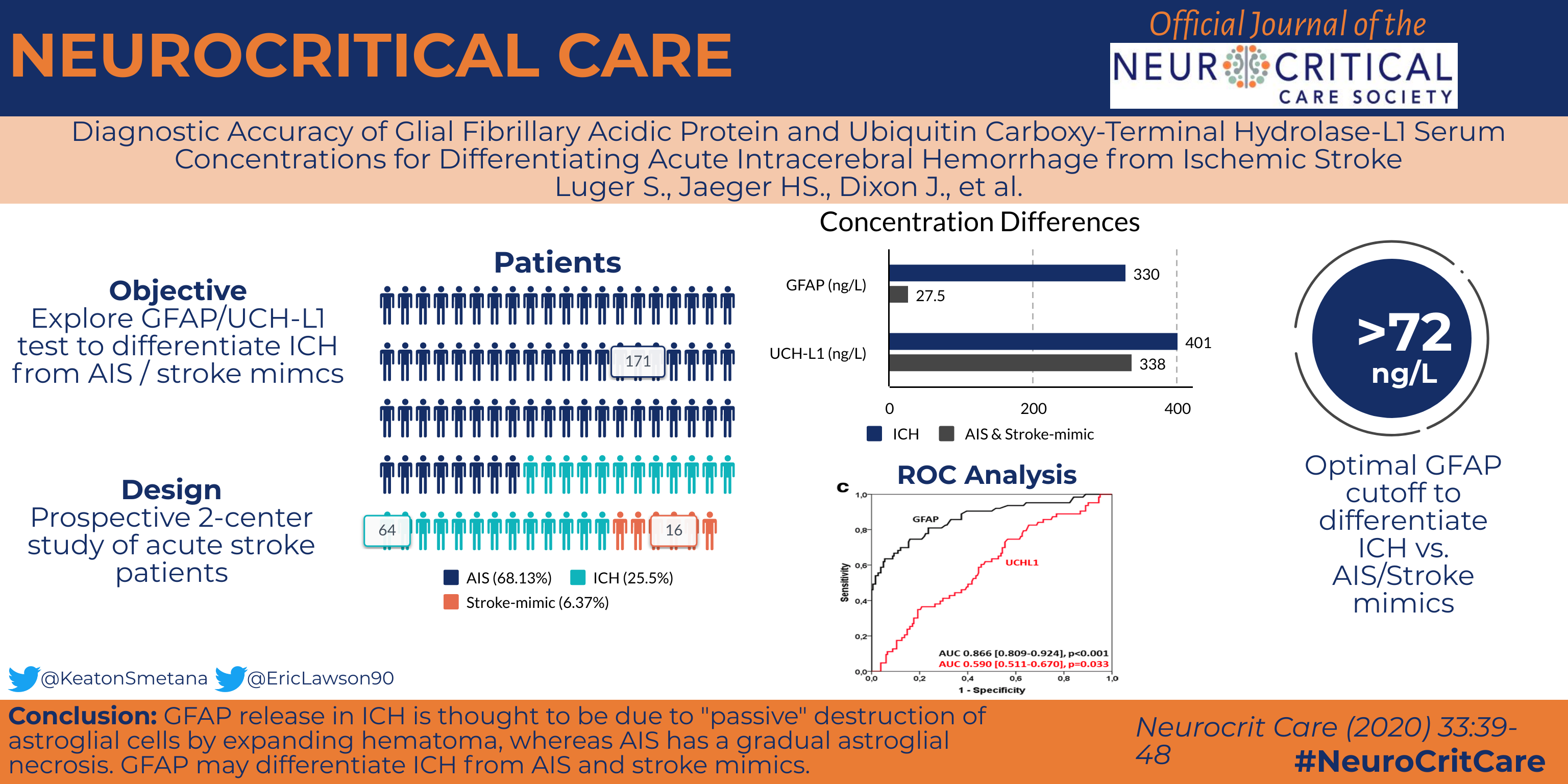By: Sebastian Luger, Henriette S. Jæger, Joanna Dixon, Ferdinand O. Bohmann, JanHendrik Schaefer, Steven P. Richieri, Karianne Larsen, Maren R. Hov, Kristi G. Bache & Christian Foerch for the BE FAST III Study Group
Published: 24 February 2020
Background

Biomarkers indicative of intracerebral hemorrhage (ICH) may help triage acute stroke patients in the pre-hospital phase. We hypothesized that serum concentration of glial fibrillary acidic protein (GFAP) in combination with ubiquitin carboxy-terminal hydrolase-L1 (UCH-L1), measured by a rapid bio-assay, could be used to distinguish ICH from ischemic stroke.
Methods
This prospective two-center study recruited patients with a clinical diagnosis of acute stroke both in the pre-hospital phase and at hospital admission (within 4 and 6 h after symptom onset, respectively). Blood samples were analyzed for concentrations of GFAP and UCH-L1 using ELISA techniques. The reference standard was the diagnosis of ICH, ischemic stroke, or stroke mimicking condition achieved after clinical workup including brain imaging.
Read the full article.